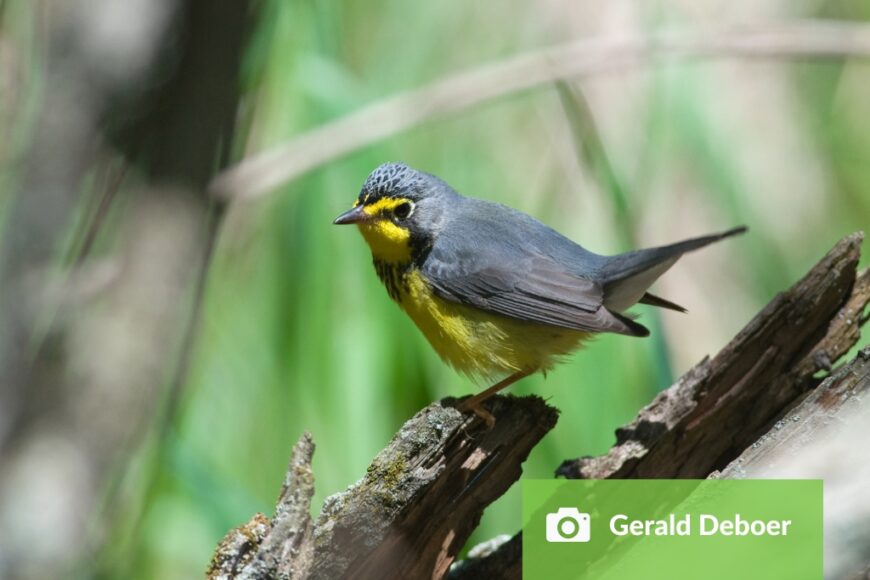Dawson Trail Dispatch, written by Norm Gregoire, May 2024
Page 12 https://issuu.com/dispatch222/docs/dawson_trail_dispatch_may_2024
For bird-watching enthusiasts, there is no better month to spend outside than May. The spring migration brings hundreds of species to Manitoba, with millions of birds either passing through on their way north or settling down in their chosen corner of Manitoban prairie, wetlands, or forest to carve out a nesting area. The Canada warbler is one of many species that chooses to spend its summer in southeastern Manitoba, and if you are lucky enough to see one hopping throughout the foliage, it can be a highlight of a birding season.
You don’t have to be a bird watcher to appreciate the beauty of a Canada warbler. The bright yellow plumage throughout the breast and onto the neck pairs well with the mottled black necklace and slate grey back. Although this is most noticeable in breeding males, females and juveniles will have a similar appearance. There are many different species in the warbler family throughout Manitoba, so making a proper identification can be tricky. I find warblers to be very active birds, never staying still for very long, which I think adds to the fun of watching them.
If you have your heart set on trying to find a Canada warbler over the next few months, then you should focus your search on their preferred habitat. Canada warblers prefer mixed woodlands with a dense understory and an abundance of insect prey. Survey the understory for quick movements and get familiar with the call of the Canada warbler, as learning bird calls can really aid in making a proper identification.
Ironically, the Canada warbler doesn’t spend a whole lot of time in Canada compared to other species of birds that nest here. They are generally some of the last birds to appear and the first to leave. Perhaps they received the name “Canada” due to having eighty percent of their breeding range in Canada.
The Canada warbler migration route can take them as far south as the Andes Mountain range in South America, where they spend their winters on the forested slopes. A threat the Canada warbler is dealing with is the rapid deforestation on this overwintering ground. As a long-distance migrator, there are many obstacles to avoid, such as predation and striking man-made objects like buildings and vehicles, and there is always the chance to have to deal with inclement weather conditions.
When we welcome back migratory birds to the tall-grass prairie, it can be easy to forget the incredible journey a species like the Canada warbler undertakes. They are a species to admire and to enjoy spending time with year after year. Canada warblers add a bright spot to the landscape and are a species at risk that I hope you get the opportunity to get to know.
Adventures with Nature Norm
Celebrate World Migratory Bird Day with Nature Norm! Join me for a morning of birdwatching on May 11th, with two departures at 8 a.m.–10 a.m. and 10 a.m.–12 p.m., starting at the Agassiz Interpretive Trail 7 km west of Vita off Highway 201. Whether you are an avid bird watcher or a beginner, please join us to learn about all the new migrants seen on the trip, with a focus on the species at risk in the tall-grass prairie. Please contact Norm at info@sharedlegacymb.ca for more details. I hope to see you there!

